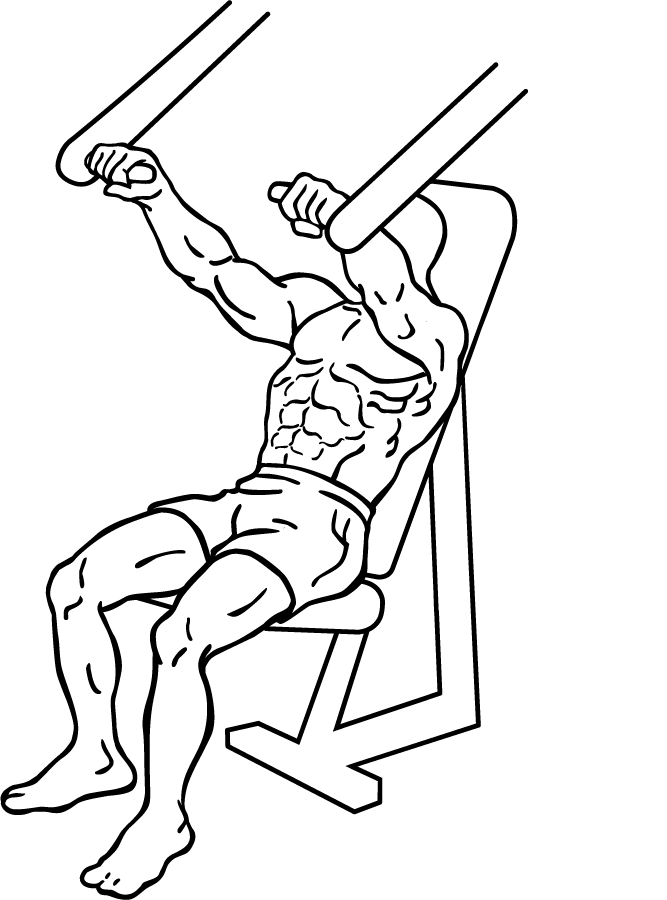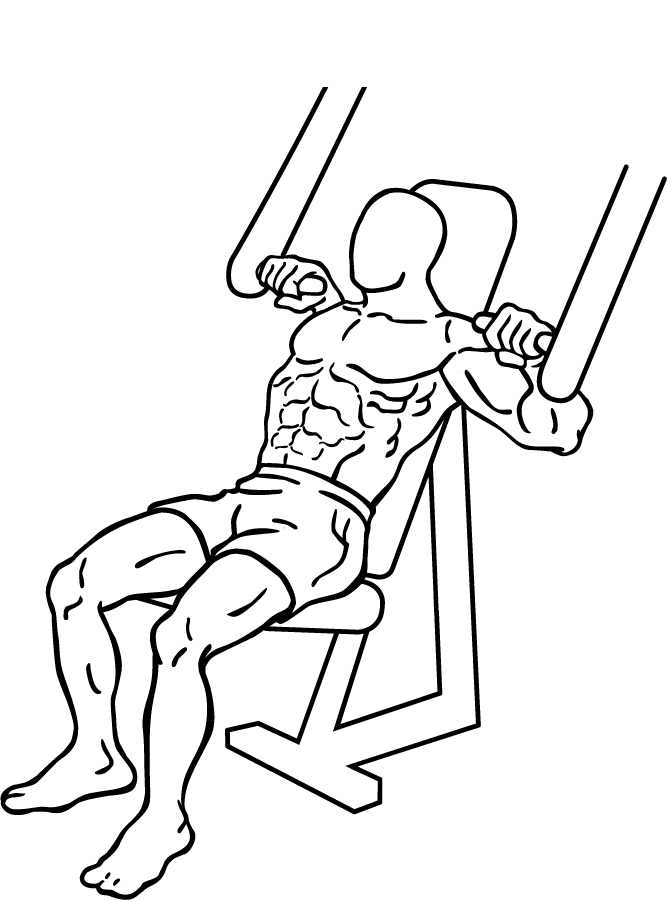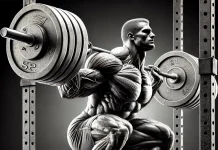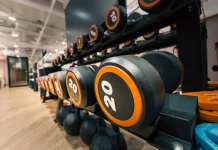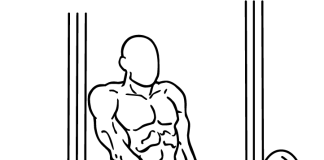Last Updated on October 23, 2024
The Incline Chest Press is a powerhouse exercise for developing the upper chest, making it a favorite among both beginners and experienced bodybuilders. Its ability to isolate and target the upper portion of the pectoral muscles while providing stability and control makes it an essential part of any chest workout routine. In this comprehensive guide, we’ll dive into everything you need to know about the Incline Chest Press: its benefits, technique, variations, and tips to maximize your gains.
What is the Incline Chest Press?
The Incline Chest Press is a compound exercise primarily targeting the upper chest muscles (pectoralis major) but also engaging the shoulders (deltoids) and triceps. Unlike the flat bench press, which works the middle portion of the chest, the incline angle shifts the focus higher, providing a more rounded and sculpted upper chest.
Key Muscles Worked:
- Pectoralis Major (Clavicular Head): The upper portion of the chest muscles.
- Anterior Deltoids: The front portion of the shoulder muscles.
- Triceps Brachii: The muscles located at the back of the upper arm, assisting in the pressing movement.
Benefits of the Incline Chest Press
- Focus on the Upper Chest: Unlike other chest exercises, the incline chest press targets the upper portion of the pectoral muscles, creating a fuller and more defined chest appearance.
- Improved Shoulder Stability: The inclined position recruits the anterior deltoids, helping improve shoulder strength and stability, which is crucial for overall upper body development.
- Support and Control for Beginners: The machine variation, especially, is ideal for beginners as it provides support, control, and a fixed range of motion, reducing the risk of injury and allowing for proper form.
- Enhanced Functional Strength: By building strength in the chest, shoulders, and triceps, the incline press translates to better performance in everyday movements and other upper-body workouts.
How to Perform the Incline Chest Press Properly
Step-by-Step Guide:
- Adjust the Bench:
- Set the bench at an incline angle between 30 and 45 degrees. An angle below 30 degrees may not adequately target the upper chest, while an angle above 45 degrees may shift the focus more to the shoulders.
- Set Up the Seat:
- For the machine variation, adjust the seat so that the handles are at the upper chest level. In the case of a free weight (dumbbell or barbell) version, ensure that the weights align directly above your chest.
- Grip and Position:
- Grasp the handles (or bar) with a firm, overhand grip. Your hands should be slightly wider than shoulder-width apart. This helps engage the chest muscles effectively while minimizing strain on the shoulders.
- Press the Weight:
- Slowly press the handles forward (or push the bar/dumbbells upward) until your arms are fully extended, but do not lock your elbows. Locking the elbows can put unnecessary stress on the joints and decrease muscle engagement.
- Control the Movement:
- Pause for a moment at the top of the movement, squeezing your chest muscles. Then, with a controlled motion, lower the weight back down until it reaches the starting position. Ensure that you maintain tension in your chest and avoid letting the weights fall.
- Repeat for Desired Repetitions:
- Aim for 3–4 sets of 8–12 repetitions. This rep range is effective for muscle growth and strength development.
Variations of the Incline Chest Press
To keep your chest workout fresh and target the muscles from different angles, you can incorporate several variations:
- Incline Dumbbell Press:
- This free-weight version allows for a greater range of motion compared to the machine or barbell variation. It also engages stabilizer muscles, helping to build overall strength and balance.
- Incline Barbell Press:
- This variation uses a barbell instead of a machine or dumbbells. It’s great for lifting heavier weights, focusing on building power and size in the upper chest.
- Smith Machine Incline Press:
- If you’re looking for more stability, the Smith machine version provides a guided range of motion, making it a safer option for beginners or those lifting heavier weights without a spotter.
- Incline Press with Resistance Bands:
- For those looking to add variety or train at home, using resistance bands can provide constant tension throughout the movement, which is excellent for muscle growth.
Common Mistakes to Avoid
Even though the incline chest press is straightforward, many people make mistakes that can lead to injury or reduce its effectiveness:
- Setting the Bench Angle Too High:
- A common mistake is setting the incline bench at an angle higher than 45 degrees. This shifts the emphasis away from the chest and onto the shoulders, which could lead to muscle imbalances and limit chest development.
- Locking the Elbows:
- Locking your elbows at the top of the movement can put strain on your elbow joints and reduce chest muscle engagement. Always keep a slight bend in your elbows to maintain tension.
- Using Too Much Weight:
- Ego-lifting is a quick way to ruin your form and increase the risk of injury. Start with a manageable weight and gradually increase as your strength improves.
- Incorrect Hand Position:
- Having your hands too wide or too narrow can put unnecessary stress on your shoulders. Ensure your grip is just wider than shoulder-width apart for maximum chest activation.
- Rushing Through Reps:
- Controlled, slow movements are key for muscle growth. Rushing through the reps not only diminishes the effectiveness but also increases the chance of improper form.
Tips for Maximizing Your Incline Chest Press
- Warm-Up Properly:
- Before jumping into your sets, do a thorough warm-up that includes dynamic stretches and light chest exercises like push-ups or pec flyes. This prepares your muscles for the workload ahead and reduces the risk of injury.
- Use a Spotter When Necessary:
- If you’re lifting heavy weights, especially with free weights, having a spotter can be crucial for safety. They can assist you if you struggle with the final reps and ensure you maintain good form throughout.
- Incorporate Progressive Overload:
- To build muscle, you need to continually challenge yourself. Increase the weight, reps, or sets over time to keep your muscles growing and adapting.
- Engage Your Core:
- Keeping your core tight during the press helps stabilize your body and prevents lower back strain. Focus on squeezing your abs as you press the weight.
- Focus on the Mind-Muscle Connection:
- Concentrate on feeling the contraction in your chest as you press and lower the weight. Visualizing the muscles working can enhance engagement and improve results.
Incline Chest Press vs. Flat and Decline Bench Press
To fully develop the chest, it’s important to understand how the incline chest press compares with other variations like the flat and decline bench press:
- Flat Bench Press: Targets the middle part of the chest. It’s a versatile exercise but may not be as effective for isolating the upper chest.
- Decline Bench Press: Focuses on the lower chest and can be beneficial for a well-rounded chest workout but lacks upper chest engagement.
- Incline Chest Press: Best for building the upper chest and improving chest symmetry, especially if your upper chest is lagging.
For a balanced chest workout, incorporating all three variations is recommended.
The Science Behind the Incline Chest Press
The incline angle used during the chest press shifts the load from the middle of the chest to the upper fibers of the pectoralis major. Research has shown that training the chest at various angles activates different parts of the muscle, leading to a more complete and balanced physique.
Additionally, engaging the anterior deltoids and triceps during the incline press supports overall upper body strength and improves performance in other compound lifts like the shoulder press and dips.
Final Thoughts
The Incline Chest Press is a crucial exercise for anyone looking to build a full and defined chest. By understanding the proper technique, incorporating variations, and avoiding common mistakes, you can make the most of this powerful movement. Whether you’re a beginner seeking support and control or an experienced lifter aiming to sculpt your chest further, this exercise is a must-have in your routine.
So, next time you hit the gym, make the incline chest press a staple in your chest day, and watch your upper chest grow stronger and more defined.
